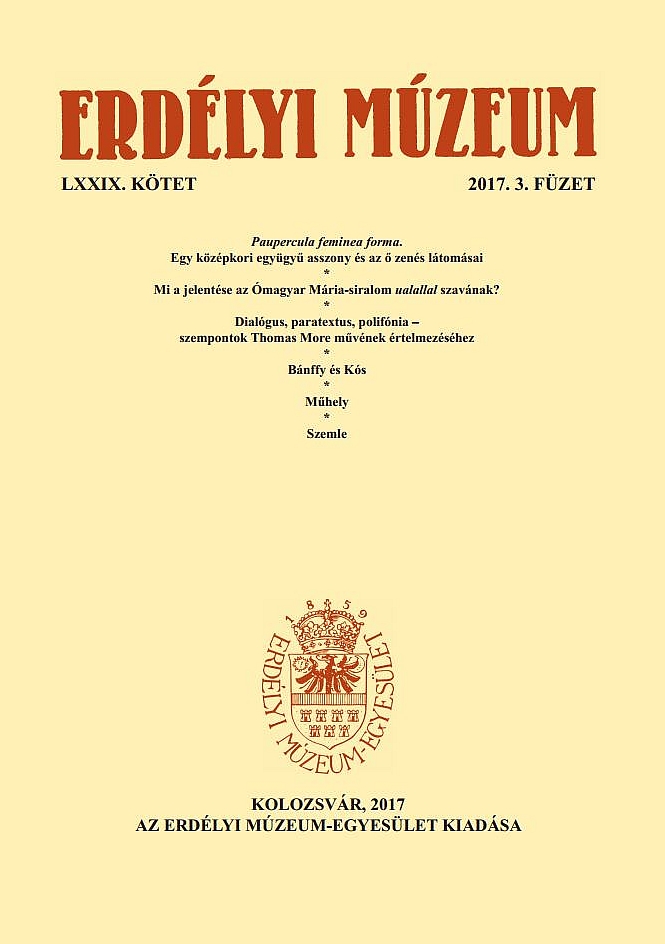Mi a jelentése az Ómagyar Mária-siralom ualallal szavának?
What is the Meaning of the Word ualallal as it Appears in the Old Hungarian Lament of the Virgin Mary?
Author(s): László HollerSubject(s): Language studies, Studies of Literature, Hungarian Literature
Published by: Erdélyi Múzeum-Egyesület
Keywords: earliest Hungarian text records; Old Hungarian Lament of the Virgin Mary; words of unidentified meaning; noun valál; verb vall
Summary/Abstract: The Lament of the Virgin Mary, written in Old Hungarian, is one of the earliest dated Hungarian texts on record. It was likely composed between 1200–1225; (see Holler, László: “Chronology of the Earliest Hungarian Text Records and the Explanation of the Expression kyniuhhad Occurring in the Old Hungarian Lament of the Virgin Mary.” Erdélyi Múzeum 77. (2015) 117–134.) The meaning of some words in the poem are disputed even today. One of these is the word ualallal, found in the 10th verse; pronounced [valállal]. The author concludes that, contrary to former explanations, the meaning of the word is ‛with suffering’. The author supports this postulation with citations from several excerpts from 15th –16th century texts in which the verb vall clearly has the meaning ‛to suffer’. He further argues that, regarding the Lament, this meaning semantically fi ts into the text perfectly. The correct spelling of the word would have been “uallallal”, but in order to achieve a perfect rhyme with the word “halállal” the poet used the special form “ualallal” having only one l after the ua- letters. This article further discusses other problems related to the 10th verse of The Lament of the Virgin Mary and extrapolates on the verse’s meaning as well.
Journal: Erdélyi Múzeum
- Issue Year: LXXIX/2017
- Issue No: 3
- Page Range: 11-50
- Page Count: 40
- Language: Hungarian

